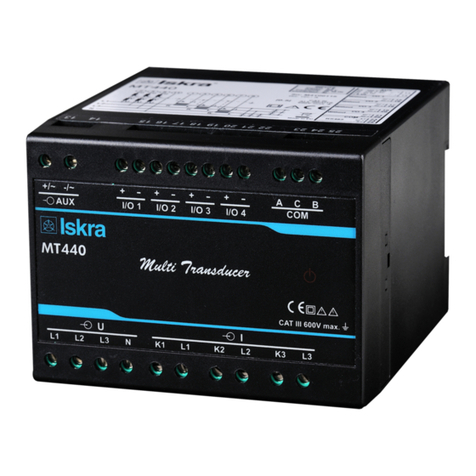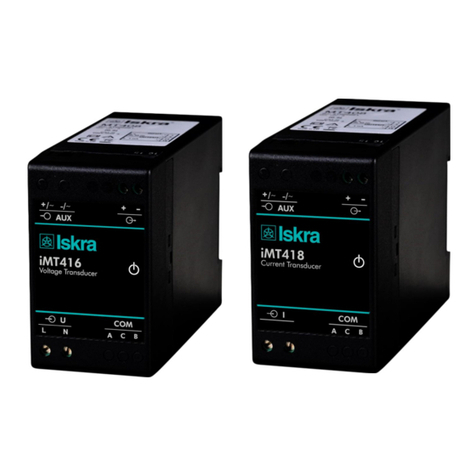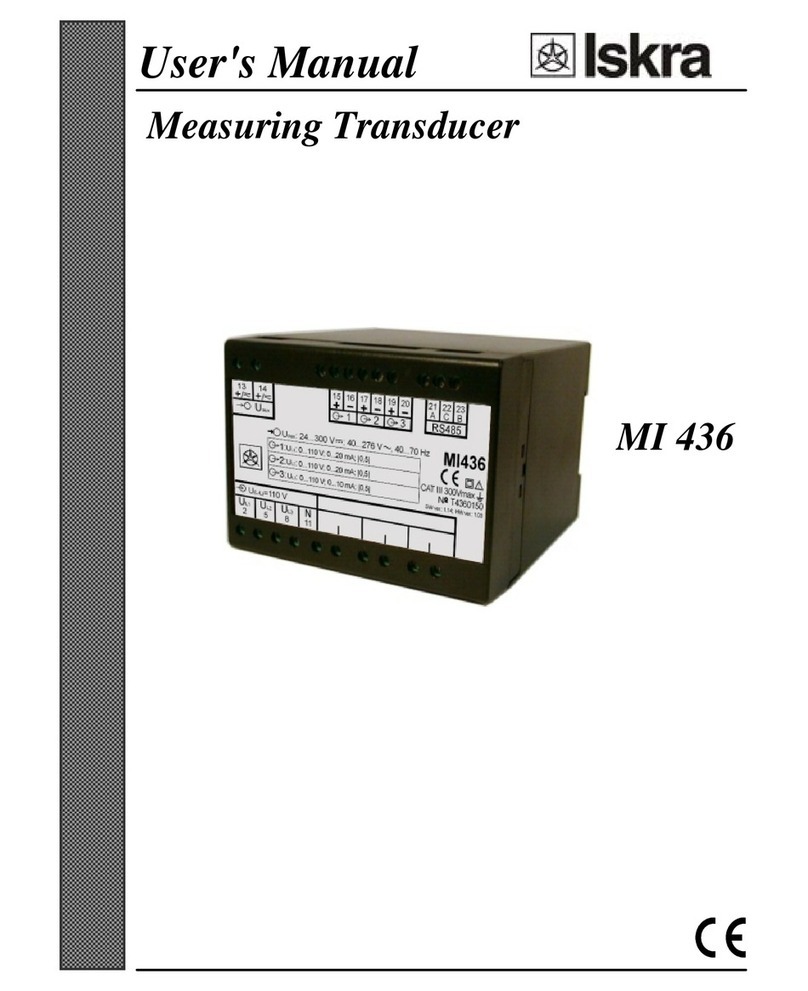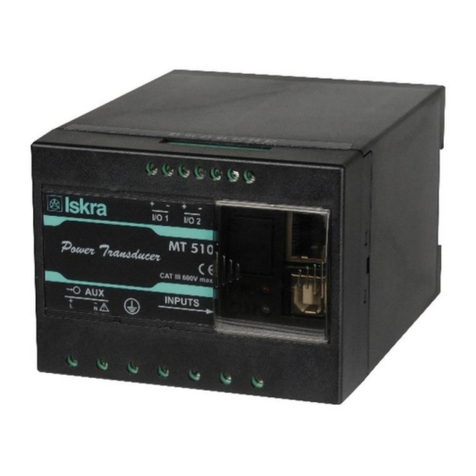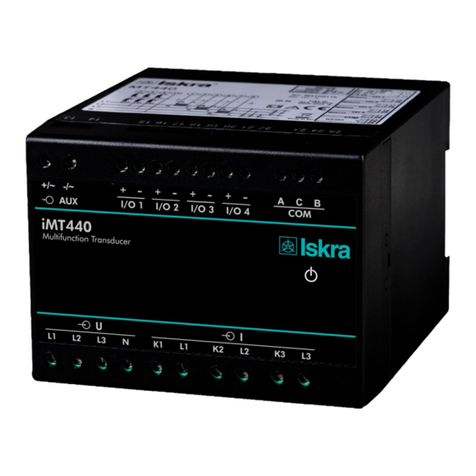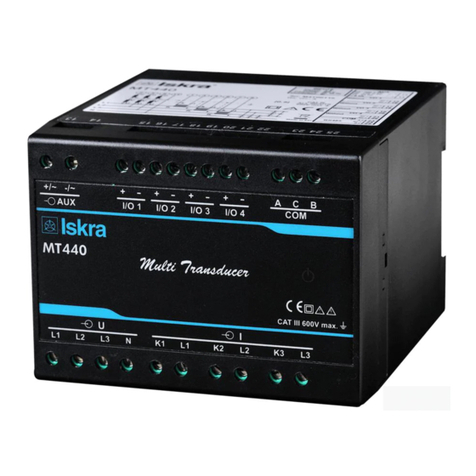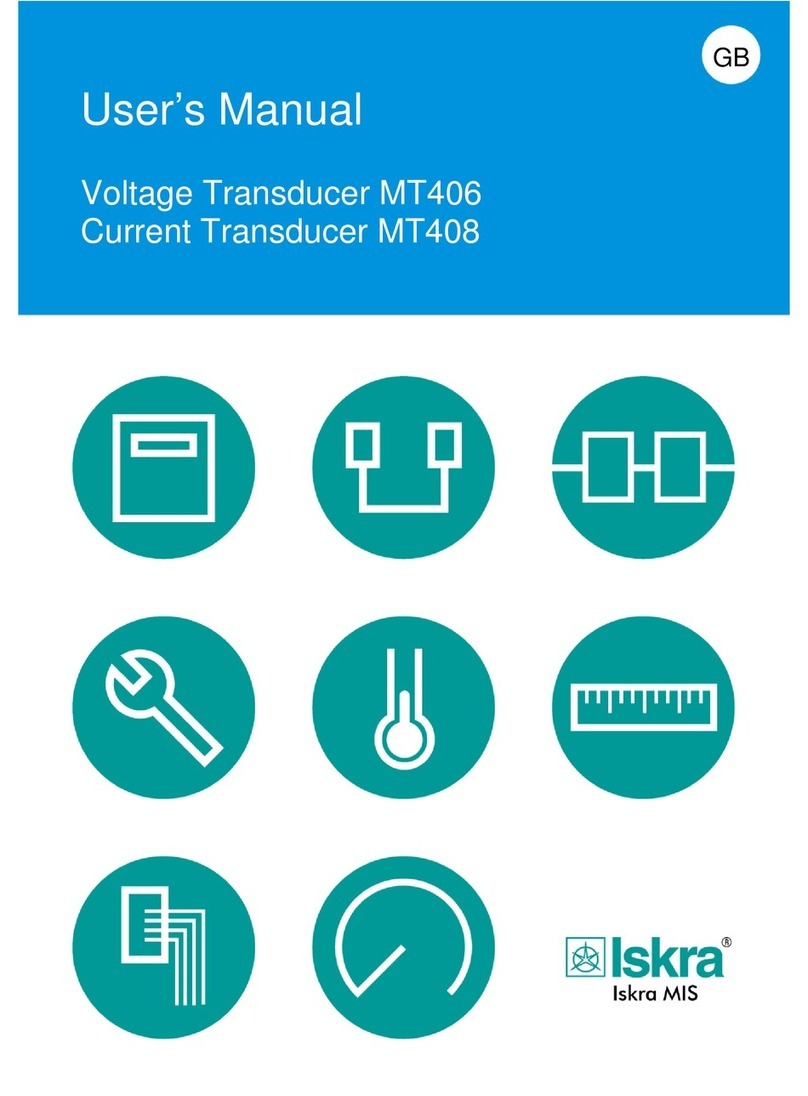
4 User's Manual MI 401
1. CONTAINS OF DELIVERY
The delivery contains:
•Measuring transducer MI 401
•User’s manual
2. SAFETY
This Safety Section should be read before
commencing any work on the equipment
•Protection: Protection class II
300 V rms, installation category III
600 V rms, installation category II
pollution degree 2
•Test voltage: 3.7 kV rms
according to EN 61010-1: 1990
The information in the Safety Section of the
product documentation is intended to ensure
that products are properly installed and handled
in order to maintain them in a safe condition. It
is assumed that everyone who will be
associated with the equipment will be familiar
with the contents of the Safety Section.
2.1 EXPLANATION OF SYMBOLS
AND LABELS
The meaning of symbols and labels which may
be used on the equipment or in the product
documentation is given below.
ACaution: refer to product
documentation
.Caution: risk of electric shock
Functional earth terminal
Note: this symbol may also be used for a
protective/safety earth terminal if that terminal
is part of a terminal block or sub-assembly e.g.
power supply.
2.2 WARNINGS, REGULAR
INFORMATION AND REMARKS
REFERRING TO CE-MARKING
In this manual installations and working
instructions for the measuring transducer
MI 401 is to be found. Installation as well as
use of the measuring transducer will involve
working with dangerous currents and voltages.
Professionals must handle these areas. ISKRA
MIS d.d. does not take on responsibility for the
use and installation. If any doubt comes up
concerning the installation or use of the system,
on which the measuring transducer is to be used
for measurement, the person responsible for the
power installation should be contacted.
Measuring transducer MI 401 is CE-marked
according to the LV-directive and EMC-
directive for housing and light industry, which
normally covers the most common use of the
measuring transducer.
Before energising the equipment, the
following should be checked:
•Voltage rating
•Current transformer (CT) circuit rating
and integrity of connections
•Protective fuse rating (the recommended
maximum rating of the external
protective fuse for this equipment is 6A
- Red Spot type or equivalent);
•Integrity of earth connection (where
applicable)






